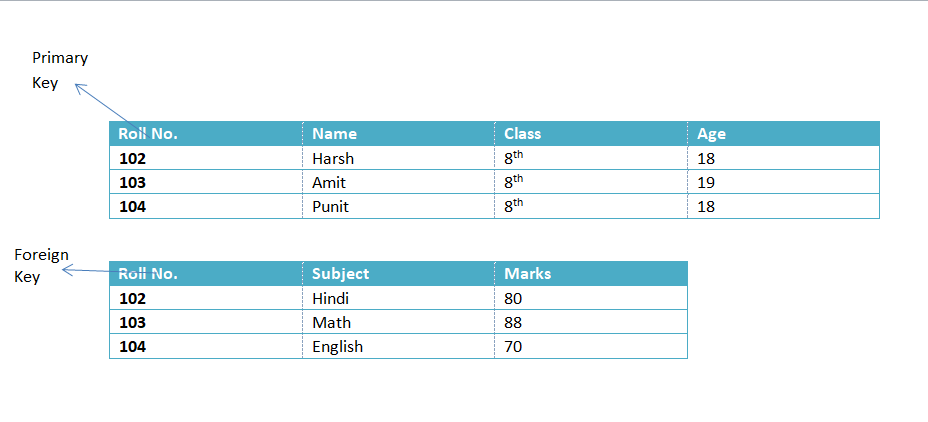Classification of Data Models in DBMS:
1. Conceptual Data Model:
A conceptual data model is a high-level representation of the organizational data and its relationships within an enterprise. It provides a comprehensive view of the data without getting into the details of how the data will be implemented or stored physically in a database management system (DBMS). The main purpose of a conceptual data model is to capture the essential business concepts and rules in a way that is easily understandable by both technical and non-technical stakeholders.
Types of Conceptual Data Model:
Conceptual data models are typically categorized into different types based on their approach, purpose, or methodology. Three common types of conceptual data models are: –
- Entity-Relationship Model (ER Model): The Entity-Relationship (ER) model is one of the most widely used types of conceptual data models. It represents the data in terms of entities, relationships, and attributes. Entities are objects or concepts in the business domain, relationships depict connections between entities, and attributes describe the properties of entities.
- Object-Oriented Model (OOM): The Object-Oriented Model is based on the principles of object-oriented programming. It represents data as objects, which encapsulate data and behavior. Objects have attributes (data fields) and methods (functions or procedures). This model is particularly useful when the data and operations on the data can be naturally organized into objects.
- Semantic Data Model: The Semantic Data Model focuses on representing the meaning of the data and its relationships. It emphasizes capturing the semantics or business logic associated with the data. This type of model is often used when a precise understanding of the business concepts and their interrelationships is crucial.
Key Components of Conceptual Data Model:
-
Entities:
- Entities represent the main objects or concepts in the business domain. For example, in a university database, entities might include “Student,” “Course,” and “Professor.”
- Each entity has attributes that describe its properties. For a “Student” entity, attributes could be “StudentID,” “Name,” and “DateOfBirth.”
-
Relationships:
- Relationships define how entities are related to each other. They illustrate the connections and interactions between different entities.
- Relationships can have cardinality, which indicates the number of instances of one entity that can be associated with the number of instances of another entity. Common cardinalities include one-to-one, one-to-many, and many-to-many.
-
Attributes:
- Attributes are properties or characteristics of entities. They provide details about the entities they belong to.
- Attributes can be classified as simple (atomic) or composite (composed of multiple sub-attributes). For example, a “Address” attribute may be composed of sub-attributes such as “Street,” “City,” and “Zip Code.”
2. Representational Data Model:
This type of data model is used to represent only the logical part of the database and does not represent the physical structure of the databases. This model allows us to focus primarily on the design part of the database.
Types of Conceptual Data Model:
- Relational Model: The Relational Model represents how data is stored in Relational Databases. The Relational Model uses Collection of tables to represent data and relationship among them.
-
- Features:
- Data is organized in terms of rows & columns in a table.
- The intersection of a row and column must give a simple value.
- Does not maintain Physical Connection.
- Implementation:
- The Relational Model is implemented with the help of two- dimensional array.

- The field which is common in all data files and is used to link all of them as a database is called Key Field.
- For Example: In table, we see that Roll No. is common in both table is called key field as well as foreign key.
- Features:
-
- Network Model: In Network Model, the data is represented collection of records and relationship among them is represented by link. The links can be thought of as a pointers and the record as arbitrary graphs. Database forms tree likes structure with highest level as root and next levels are children. The concept of parent and child is here.
-
- Implementation:
- The Network Model is closely tied to the implementation. The Network Model uses the data structure diagram for its representation and link and pointers for its implementation.
- Example:
- Implementation:
-
- Hierarchical Data Model: The Hierarchical Model contains a collection of records connected in form of a tree. It is similar to network model in structure expect that one Child can have only one Parent.
-
- Example:
- Example:
-
3. Physical Data Model:
Ultimately, all data in the database installed physically on a secondary storage device such as discs and tapes.
This is stored in the form of files, records and certain other data structures. It has all the information of the format in which the files are present and the structure of the databases, presence of external data structures and their relation to each other.
Two of the widely used physical model are:
- #unifying model
- #frame memory model


